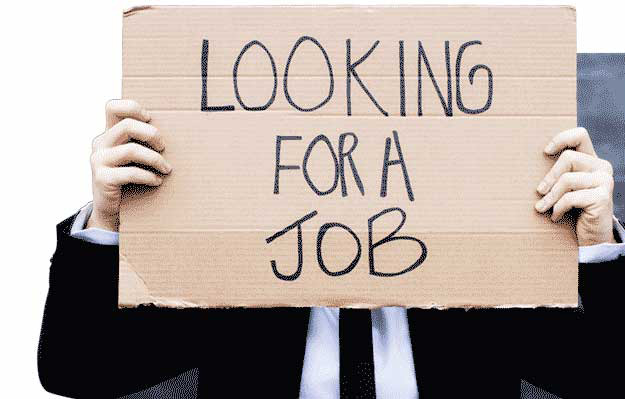
.jpg) Peter Mundackal
Peter Mundackal

A spectre is haunting India, the spectre of unemployment. It exhibited its ominous face on 24th January 2022, when thousands of youths who had appeared for Railway Recruitment Board’s Non-Technical Popular Category (NTPC) recruitment examination, blocked trains in Bihar and U.P. in protest against the results released in the first half of January. In Bihar, it took a violent turn, leading to setting a train on fire by students. In UP, the policemen barged into lodges of college students, thrashed several students and 6 policemen were later suspended.
That the problem has been a simmering one since long is clear from the facts that (a) quite some time ago India got the distinction of recording the highest unemployment rate in 45 years, and (b) the Minister of State for Home stated in the Lok Sabha, in a written reply on 9th February, that according to National Crime Records Bureau, 3,548 people died by suicide due to unemployment in 2020. Karnataka topped the distinction with 720 suicides.
It is another matter on the same day, a BJP MP from Karnataka declared in the Lok Sabha that there was no unemployment in the country! He stressed that ‘there are enough opportunities for the talented and hardworking’, implying that those who are unemployed remain unemployed because they are not talented and hardworking, a case of calling the barking dog by a bad name, before killing it!
Railways had proposed to recruit for 35,281 vacant posts in various categories ranging from Junior Clerk to Station Master in its various zones. Around 11,000 of these vacancies require Class 12 pass as the minimum qualification. Against the 35,281 vacancies, 1.25 crore applications were received! Naturally, many candidates with higher qualifications had applied for those posts, rendering those less qualified at a great disadvantage. Railways found it legally impossible to bar those with higher qualifications from applying for posts which required only lower qualifications. As part of a screening process, Railways conducted computer-based test for all candidates. Nevertheless, the results were not satisfying to those with lower qualifications. Railways now plans to conduct a second test some time in February or March.
Such protests illustrate the core problem, the glaring mismatch between demand and supply of jobs – 1.25 crore applicants against 35,281 vacancies. Over the years, there have been numerous reports of the number of candidates applying for even entry level government jobs far exceeding the vacancies available. The growing clamour for increasing reservation in public sector jobs by various caste groups, as well as for widening the ambit of reservation to encompass private sector, also point to the same malaise of inadequate employment creation in the country. The pandemic has exacerbated India’s job crisis.
According to the estimates of the CMIE (Centre for Monitoring Indian Economy), the labour force participation declined to around 40%, much lower than levels observed in comparable countries. This implies that even in ‘young’ population, many are dispirited by the lack of jobs. Since the unemployment rate has risen, many who are looking for jobs, and are well qualified for the same, are not able to find jobs, especially among the youth and the more educated. As per CMIE, the employment rate at all-India level has fallen from 43% in December 2016 to 37 % in December 2021. In Uttar Pradesh, it has fallen from 38.5% during September 2016 to 32.8% during the same period in 2021. The shift away from regular salaried employment towards casual wage labour is of equal concern.
In a developing country, an important indicator of its welfare status is the number of persons of 15 years and above who constitute the work force. In the work force, the LFPR (Labour Force Participation Rate) is the proportion of the population that is presently employed or seeking employment. According to the Economic Survey presented in Parliament on 31st January, against the work force of 94 crore, the LFPR is only 52 crore, even by the rosy picture painted in the Survey.
The Prime Minister, while campaigning in 2013-14, had promised to create 2 crore jobs every year. By that promise, he should have created 14 crore jobs, and if he had, we would not have witnessed the mayhem described at the outset of this article. Of course, later the Prime Minister, clever politician that he is, consoled himself with the ludicrous claim that even selling pakoras was also a job! The Pandemic, followed by the lockdown, led to the closure of 60 lakh MSMEs. Millions lost their jobs, that included regular, salaried jobs as well as casual labour.
Writing in the Indian Express of February 6, 2022 (“No work, no welfare, only wealth”) P. Chidambaram, former Finance Minister, says that the current unemployment rates are: Urban – 8 % and Rural -- 6 %. Besides, those who returned to work, faced wage cuts. In the last two years, 84% of households have suffered a loss of income. In this background, the Budget has promised that 60 lakhs jobs will be created in the next five years, through infrastructure projects. Against the 12 lakh new jobs a year, “the number of persons who enter the work force every year is 47.5 lakhs, according to ‘Labour Bureau’. Why worry too much, after all, anybody can sell ‘pakoras’, and live somehow!
(The writer is a Development Consultant and can be reached at petermundackal@yahoo.com.)